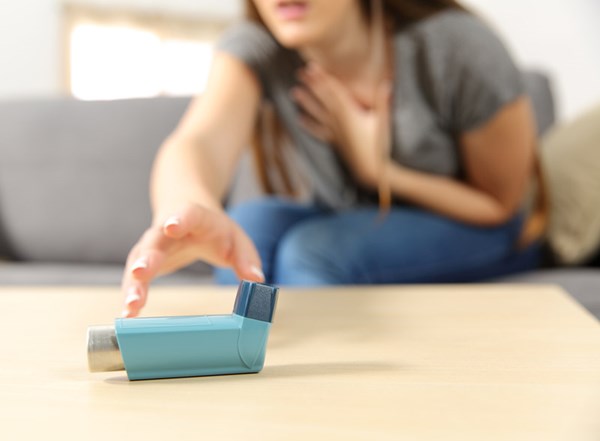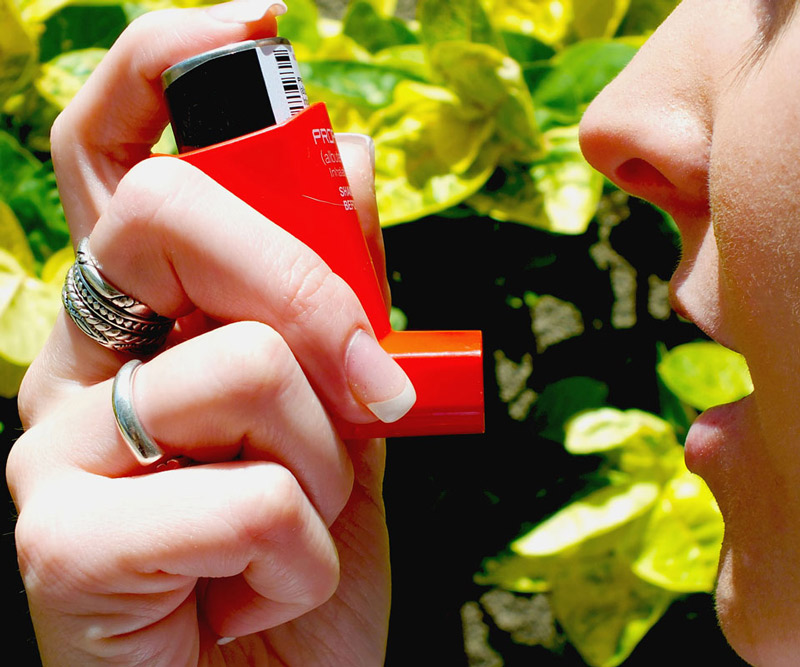
New Treatments Give Hawaii Residents Relief from Asthma & Allergy Symptoms
The wide world of allergies is experiencing a dramatic shift in how care is being delivered.
“It’s an exciting time for allergists and immunologists – we have these new, cutting-edge therapies available that have life-changing implications,” says Dr. Jeffrey Kam, an allergist with Straub Medical Center.
Here is a peek at three new therapies and treatments now available to Hawaii residents.
Fasenra
Highlights:
- Designed to work with the body to help remove eosinophils, a key cause of severe asthma.
- Add-on maintenance treatment for patients ages 12 and older with severe eosinophilic asthma.
- One of the newest medications out for the treatment of moderate to severe asthmas.
According to Kam, there are currently four new medications available for people who have asthma so severe, it impacts their quality of life.
 The newest one of the group, Fasenra works with the body’s immune system to attack eosinophils, allergy cells that cause inflammation in the lungs.
The newest one of the group, Fasenra works with the body’s immune system to attack eosinophils, allergy cells that cause inflammation in the lungs.
The series of injections is given by a health care provider. The first three doses are given in four-week intervals. After the first two months, patients receive one dose every eight weeks.
“Fasenra will help patients with severe asthma who require inhalers and medications with steroids, which have a bad effect on the body long-term, to get off of these medications and improve their quality of life,” explains Kam.
Fasenra has been studied in the largest clinical trial program for targeted therapies in severe eosinophilic asthma and has shown to work better than standard asthma treatments alone.
“The data is really exciting and has shown improvement in patients after the first injection,” Kam says.
Dupixent
Highlights:
- FDA-approved injection used to treat adults with moderate-to-severe eczema that is not well controlled with prescription topical therapies, or for those who cannot use topical therapies.
- Not a steroid.
- Can be taken with or without topical corticosteroid.
“Eczema, or atopic dermatitis, can really affect quality of life. People can get these really itchy rashes, and it can affect their face, their whole body and even their scalp,” says Kam.
To date, the only therapy available to patients were topical steroids that required patients apply a cream to their entire body.
“You can imagine the difficulty of putting a cream everywhere once or twice a day. And, even if you use the creams, you would still have a rash,” Kam says.
A self-injection, Dupixent blocks certain mediators in the body that cause skin inflammation.
In clinical studies of more than 2,100 patients, more than one in three saw clear or almost clear skin after 16 weeks of using Dupixent. These patients also experienced a significant reduction of itchiness, and almost half of patients saw significant overall skin improvement over this same time period.
“It’s life-changing,” says Kam, noting that one of his patients saw improvements in just four months.
“With previous therapies, even if you didn’t have a rash, you would still have the itching every day of your life – how could you focus on work or other areas of your life? It’s an annoying irritant; you would learn to live with it, but still, it’s there. With this new medication, it just improves your whole quality of life,” Kam states.
Odactra
Highlights:
- The first allergen extract to be administered under the tongue (sublingually) to treat house dust mite (HDM)-induced nasal inflammation (allergic rhinitis).
- Works in allergies that present with or without eye inflammation (conjunctivitis).
- Adults 18-65 years of age can take the daily dose at home, at their convenience.
“When people have allergies, there are certain things they can do – They can take nasal sprays, they can take oral pills like antihistamines, or they can take allergy injections in which we inject the body with the things you’re allergic to so you become immune to it. But some people don’t want to get injections, or they don’t have the time to come into the doctor’s office,” Kam says.
For dust mite-allergic individuals who fall into the latter category, there is now a solution.
“Believe it or not, you can put this little pill under your tongue and it desensitizes your body to dust mites without needed injections,” Kam says of Odactra.
The one catch – those pills contain extract de dust mite.
 “It is a mental thing to get over, but I do tell patients that they’re sterile dust mites, and they’re cooked!” Kam laughs.
“It is a mental thing to get over, but I do tell patients that they’re sterile dust mites, and they’re cooked!” Kam laughs.
House dust mite allergies are a reaction to microscopic bugs that are commonly found in house dust.
Close relatives of ticks and spiders, dust mites live in bedding, upholstered furniture and carpeting.
Those with dust mite allergies may experience the following symptoms:
- Cough.
- Runny nose.
- Nasal itching.
- Nasal congestion.
- Sneezing.
- Itchy and watery eyes.
“Here in Hawaii, dust mite allergies are a big problem,” Kam says.
The patient is observed for signs or symptoms of a severe allergic reaction. If none occur, the patient can take subsequent daily doses at their own convenience.
Kam has prescribed the treatment to six patients so far without complaint – even with the “ick” factor of having to ingest dust mites.
“As an allergist, I’m really excited about where we’re going in minimizing medications and improving quality of life,” Kam says.
Published on: May 30, 2018




